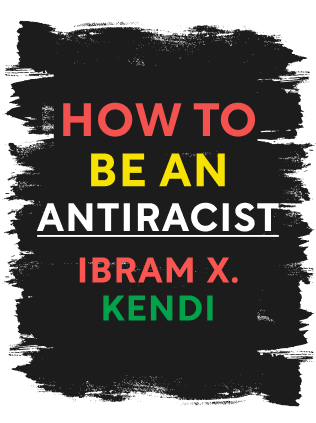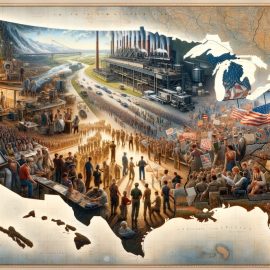

This article is an excerpt from the Shortform book guide to "How to Be an Antiracist" by tIbram X. Kendi. Shortform has the world's best summaries and analyses of books you should be reading.
Like this article? Sign up for a free trial here .
What is race-sexuality? How does this combined identity relate to queer racism?
A race-sexuality is your combined race and sexual orientation identity. For example, your combined identity might be a White lesbian woman or a Black gay man.
Keep reading to learn more about race-sexuality and how it is the focus of queer racism.
Queer Racism and Race-Sexuality
A race-sexuality is a combination of race and sexuality, for example, Black gay men and White lesbian women.
Queer racism is a combination of racist policies and ideas that causes and maintains racial inequities between race-sexualities. Queer racists link race and sexuality and arrange each race-sexuality into a hierarchy.
Example #1: In the US, on average, transgender women of color have a life expectancy of 35 years because they face so much transphobia and racial violence. In terms of race-sexuality, transgender women of color suffer the worst discrimination.
Example #2: 7% of children raised by White heterosexuals live in poverty, while 14% raised by White male same-sex couples live in poverty, and 32% raised by Black male same-sex couples live in poverty. This statistic is a result of two sets of policies and ideas: 1) those related to race (policies favor White people over people of color), and 2) those related to sexuality (policies favor straight people over queer people).
Queer inequalities are the result of policies, not the actions of individual members of races.
History and Invention of Queer Racism
Racism and homophobia have been related throughout history. In 1897, Havelock Ellis, a British physician, popularized the word “homosexual” in his first book about sex and wrote that sex was related to race. He was a biological racist and thought that there were biological differences between heterosexual and homosexual people as well. He didn’t condemn homosexuality—he thought it was a “congenital physiological abnormality,” not a crime—but he did, however, believe that all people of color are born criminals.
At the time, racist doctors were comparing the clitoris of White and Black women. White women supposedly had “bound together” clitorises, which meant they were more civilized. The “free” clitoris found in Black women meant they were wild and animal-like. These doctors suggested that the “free,” or abnormally prominent, clitoris was related to homosexuality.
The combination of the queer racist ideas that Black people are more hypersexual and queer people are more hypersexual suggested that Black queers were the most hypersexual race-sexuality, and you could identify these people by their prominent clitoris.
Ibram’s Experiences With Race-Sexuality
Childhood Ideas About Sexuality
Like Ibram’s ideas on gender, his ideas on sexuality were shaped by his upbringing. His parents didn’t raise him to be homophobic or sexist, but they rarely talked about queer people.
Weckea
Ibram had two close friends at Temple University, Weckea and Raena. One day, Raena told Ibram that Weckea was gay. Ibram wasn’t comfortable with homosexuality and thought Raena might be trying to break up his friendship with Weckea.
Up until this point, Ibram held some stereotypical beliefs about Black gay men, such as that they were reckless, sex-crazed, and performed feminity. (Performing femininity or masculinity refers to authentically expressing gender, as opposed to acting.) Weckea didn’t fit into Ibram’s stereotypes at all—he was private and performed masculinity.
Ibram was faced with a choice—maintain his homophobia or maintain his friendship with Weckea. Ibram chose Weckea and began dismantling his homophobia. He let his stereotypical beliefs go and learned from Weckea how to recognize homophobia in others.
Also, as Ibram had done with race as a child, he acknowledged his gender and sexuality. He identified as a cisgendered (his gender identity is the same as his birth sex) heterosexual Black male, and being cis, male, and hetero came with privilege he could use to support people of other sexualities.

———End of Preview———
Like what you just read? Read the rest of the world's best book summary and analysis of Ibram X. Kendi's "How to Be an Antiracist" at Shortform .
Here's what you'll find in our full How to Be an Antiracist summary :
- What racism is and how it evolved
- How you might have subtle racist thoughts and not even be aware of them
- Why being "not racist" isn't good enough






